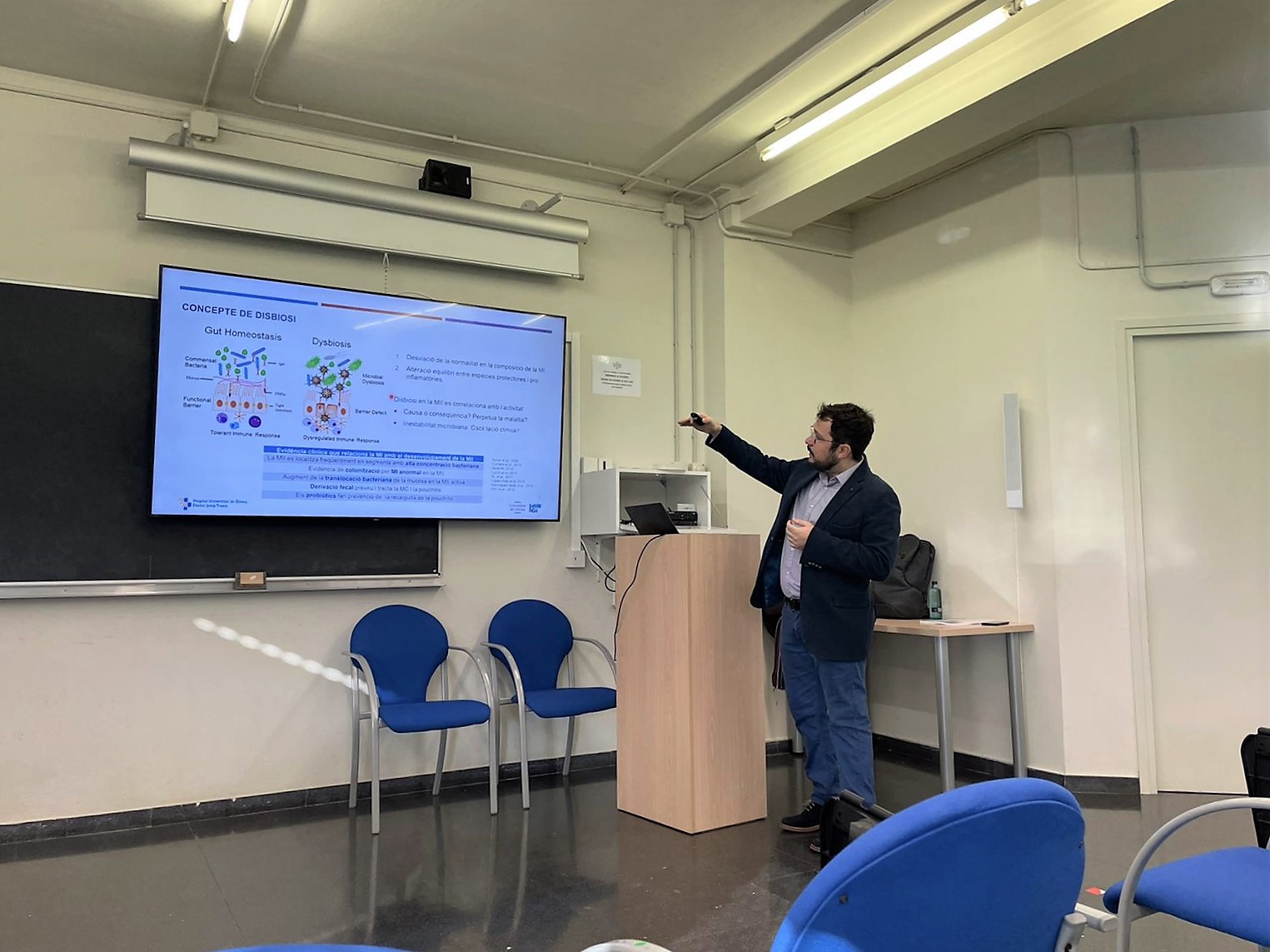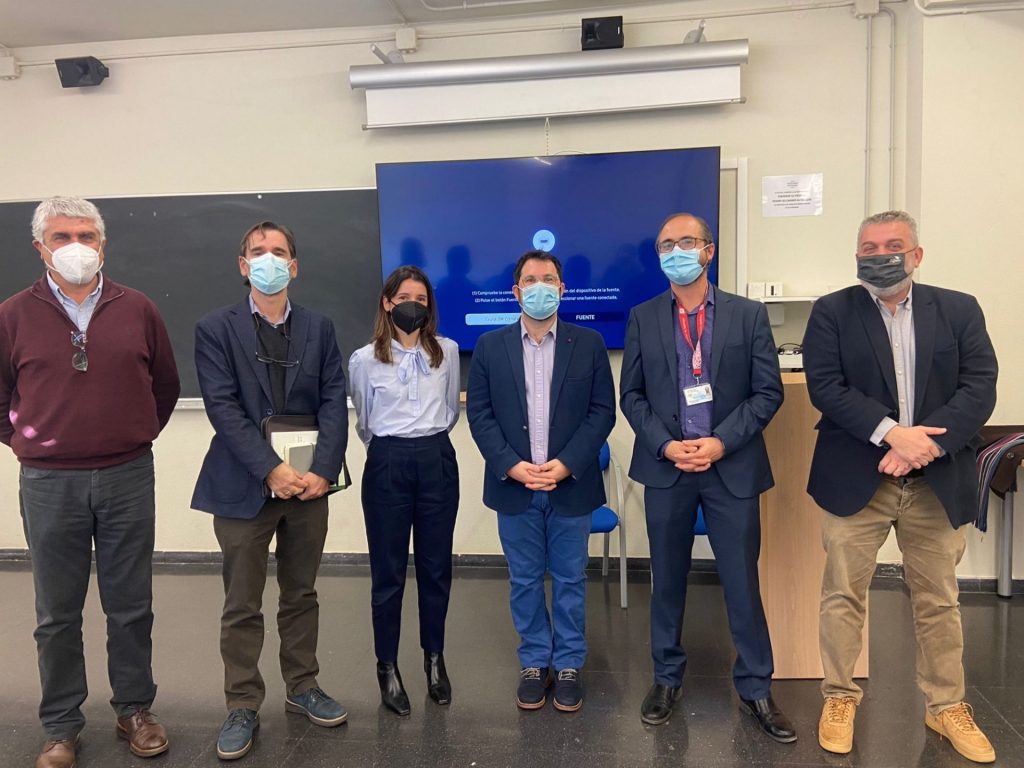
Last Friday 17/12/2021 at 11:00h Mr. Josep Oriol Miquel Cusachs read his doctoral thesis entitled: "Monitoring of inflammatory bowel disease in clinical practice using markers of intestinal microbiota in fecal samples. Prospective study", from the D. program in Molecular Biology, Biomedicine and Health at the Universitat de Girona, and directed by Dr. Librado Jesús García Gil and Dr. Xavier Aldeguer Mante.

Thesis abstract
The gut microbiota (GM) plays a pivotal role in the maintenance of gut homeostasis, and the pathogenesis of inflammatory bowel disease (IBD) which includes Crohn's disease (CD) and ulcerative colitis (UC). The degree of IBD activity, and therefore of inflammation, modifies the composition of the GM towards an altered pattern called dysbiosis This IBD-dysbiosis pattern is different from healthy individuals (HI). The degree of dysbiosis is a good indicator of IBD disease activity and could be useful in monitoring IBD disease activity.
The AIM of this study is to quantify the degree of IBD diysbiosi of the GM, and determine the utility as a biomarker for monitoring IBD disease compared with HI. METHODS: 80 prospective IBD patients from a cohort of 2 tertiary hospitals from Catalonia (Girona and Vic) have been included. As a clinical practice study, we included patients with clinical Remission, defined as Fecal Calprotectin (FC) levels <250 µg/gr., and Activity (defined as FC >250 µg/gr.) with mild to moderate disease. A blood sample (to determinate RCP, albumin and haemoglobin (Hb) levels) and stool sample (to determinate Faecal calprotectin (FC) and GM analysis) have been collected. Of the fecal samples, DNA was extracted using real-time qPCR) techniques and 3 bacterial groups (Faecalibacterium prausnitzii (FP), Escherichia coli (EC) and total eubacteria (TE), that are highly representative of GM dysbiosis degree, were analyzed. An index called FEI has been created to quantify GM dysbiosis. Data has been collected from Endoscopic IBD index (SES-CD and Mayo score), clinical IBD activity index (HBI and SCCAI) and quality of life index (IBD-Q) along with standard analytical disease activity markers (Hb,PCR,CP and Alb) in order to compare with microbial markers (FEI). The duration of this study is 6 months (every three months samples, T0, T1 and T2)).
The analysis of the results showed that RCP and FC levels showed significant differences between the 3 temporal points and the 2 diseases; and between values sorted as activity or remission. The IBD’s GM compared to HI, was characterized by a lower FP relative abundance, and an increased TE abundance, both significantly. A non-significant increase in EC abundance was observed. Disease type influenced FP, EC, and FEI levels significantly. Median FEI values were lower in CD patients compared to UC patients, indicating greater dysbiosis in CD. The 2 IBD types showed significantly lower FEI value compared to HI, indicating that 2 IBD subtypes had distinct behaviour in the study cohort. A FEI cut-off point was calculated as an activity biomarker in T0 (1,869). FEI index showed significant correlation between RCP, Hb levels, and Mayo Index. FP, TE, and FEI index mean relative’s abundance showed significant differences between activity and remission groups both for CD and UC.
Microbiological markers and FEI index were able to differentiate between IBD types and HI; and between activity and remission. The combination of RCP, FC and FEI index can become a potential IBD activity biomarker.